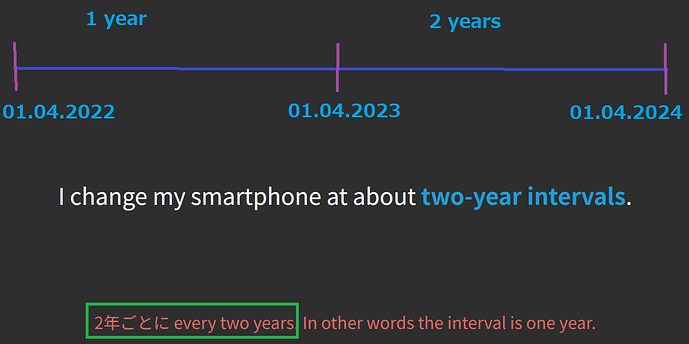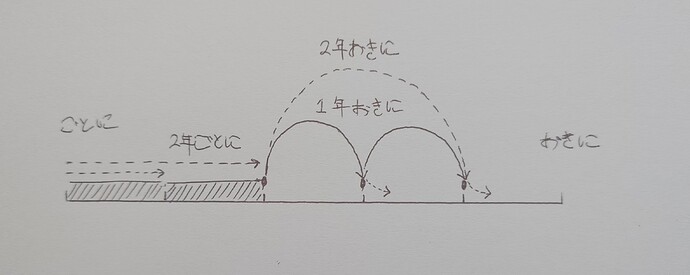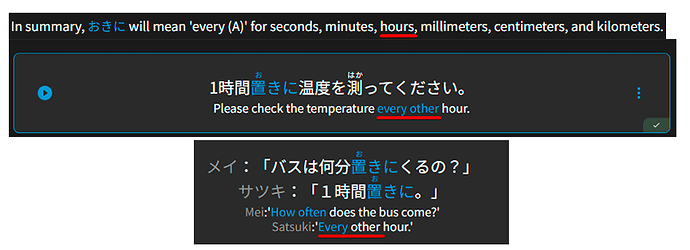So this is my interpretation of this grammar point:
I’ve read through the explanation, example sentences, links, and what’s in this thread, and what struck me with おきに is that the consistency between the explanations wasn’t what was being directly conveyed (discrete vs. continuous), but the fact that the interval to be skipped is always considered to be discrete and it’s whether or not the event can be considered spanned (i.e, a span of time) or spanless (i.e., a moment/instant in time) that marks the differences. This would explain why some sentences are naturally ambiguous, because some events can be grammatically interpreted as both depending on the context.
So for instance, if you have an event that you do every day that can be considered as a spanless moment in time, such as the time you wake up, feed your fish, etc. where you don’t naturally consider how long it will take, only the instant… then the entirety of that day has no chunk taken out of it from that event as, time-wise, it is dimensionless. Therefore, the discrete unit of the day is fully intact and can be considered as the interval to be skipped, leading to the “every day” usage that we see. Otherwise, if the event is considered to take an amount of time (spanned) for the purposes of the sentence that it’s in, then the discrete unit of the day has a chunk taken out of it and must be discarded entirely with the next discrete unit being used, leading to the “every other day” usage that we see.
This is a somewhat messy, definitely incomplete thought, so I’d appreciate it if someone could tell me if I’m missing anything with my understanding of this grammar point.




 .
. ), but hopefully makes a lot more sense. Basically all you need to remember is that ごとに = ‘sometime during (A), (B)’, while おきに means ‘sometime after (A), (B)’.
), but hopefully makes a lot more sense. Basically all you need to remember is that ごとに = ‘sometime during (A), (B)’, while おきに means ‘sometime after (A), (B)’.
